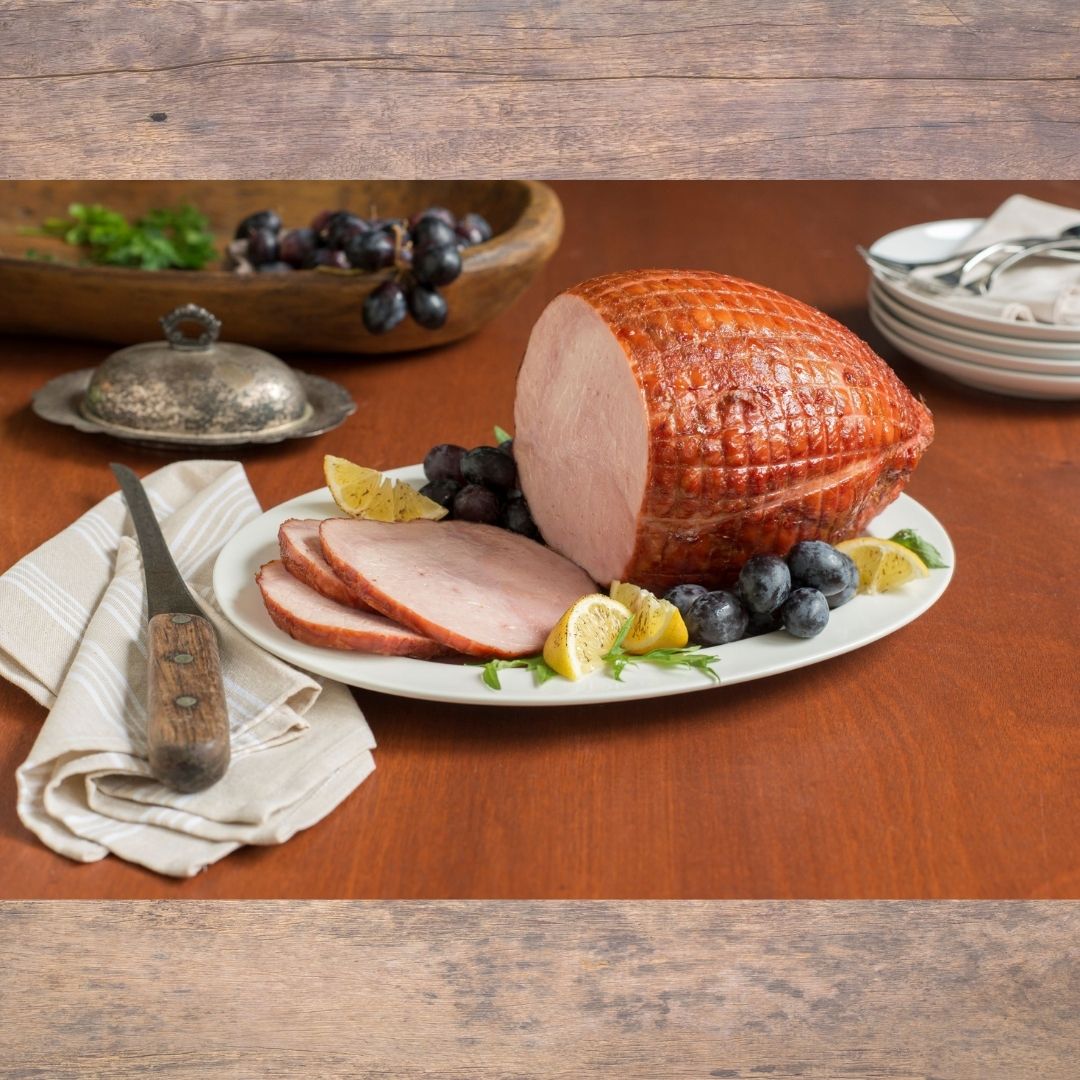Great question! We’re so glad you asked. In the next three posts we will be sharing some information that should help you pick out the perfect ham for your holiday meal, just in time for Easter. We’ll start this week by explaining how Stoltzfus Meats hams are made, followed next week by the different types of hams we offer, and lastly, some suggestions to pick out the best size ham for your group.
Hams tend to be a very popular traditional option for those special family meals at Easter or Christmas, but you may be thinking: how do I pick the best ham for my meal? Well, here at Stoltzfus Meats, we would like to think we know a thing or two about hams! I’ve enlisted the help of our vice president, Scott Moyer, who has over 40 years of experience in the meat production industry to share some of his wisdom in this area.
Ham Production Process
Inspection & Trimming
When the raw pork product comes into our production plant from local suppliers, its first step is to be inspected by our meat cutters. Once it passes the test, each ham is hand-trimmed so that most of the surface fat is removed and you’re guaranteed a nice, lean cut of meat.
Curing
After that, the meat is cured. This is what helps the ham to begin the cooking process and provides that nice pink color. Our cures never contain fillers such as soy protein or water. Instead, we prefer to allow the natural juices in the ham to do the work!
Because no water or fillers are added, this also guarantees that you end up with the meatiest ham possible, as opposed to other companies who can sell heavier hams due to a high water content but contain less actual meat product.
At Stoltzfus Meats, we use a slow-cure process. After curing, our hams are tumbled and given time to rest, which allows the cure to permeate through the meat so that the ham is evenly cured throughout.

Because products from other companies are rushed in the curing and tumbling process, they often contain additives, which are used as binding agents, to keep the ham in one piece. However, as part of our slow-cure tumbling process, a natural protein “slurry” is created, which then acts as the binding agent.
Netting & Smoking
After resting, the hams are netted, hung on racks, and placed into the smokehouse, where they are smoked using real hickory wood. This gives the meat a great, smoky flavor without the use of any flavor enhancers.

Each ham product is smoked using a unique recipe of smoke, steam, and heat depending on the type and size of the ham. Most of us don’t realize it, but there is actually quite a science to smokehouse programs!

Cooling & Packing
The hams are then moved from the smokehouse into our blast cooler, which chills the product quickly to meet food safety guidelines and ensure shelf-life. The hams move on to our packing room, where they are given another once-over, nets are removed, they are vacuum-packed, labeled, and boxed.

This whole process takes around three to four days, which means a lot of time and care is poured into each ham that is produced! For you, that sounds like assurance that the food you’re serving this holiday is guaranteed to be delicious and made with processes and ingredients that you can be proud to serve.
For us, that sounds like a reminder that we have the privilege of creating products that will be served to your family and friends. We hope that, by knowing more of the process behind just one of our products, you can see that this privilege is not one that we take lightly. It is our goal to produce the highest quality products by using sound methods, ingredients, and processes.
That wraps up part one of our Easter ham series. Check back on Monday for more information about our hams and the different types we offer!
*Please note that these photos of employees were taken prior to COVID-19 and CDC mask-wearing recommendations.

